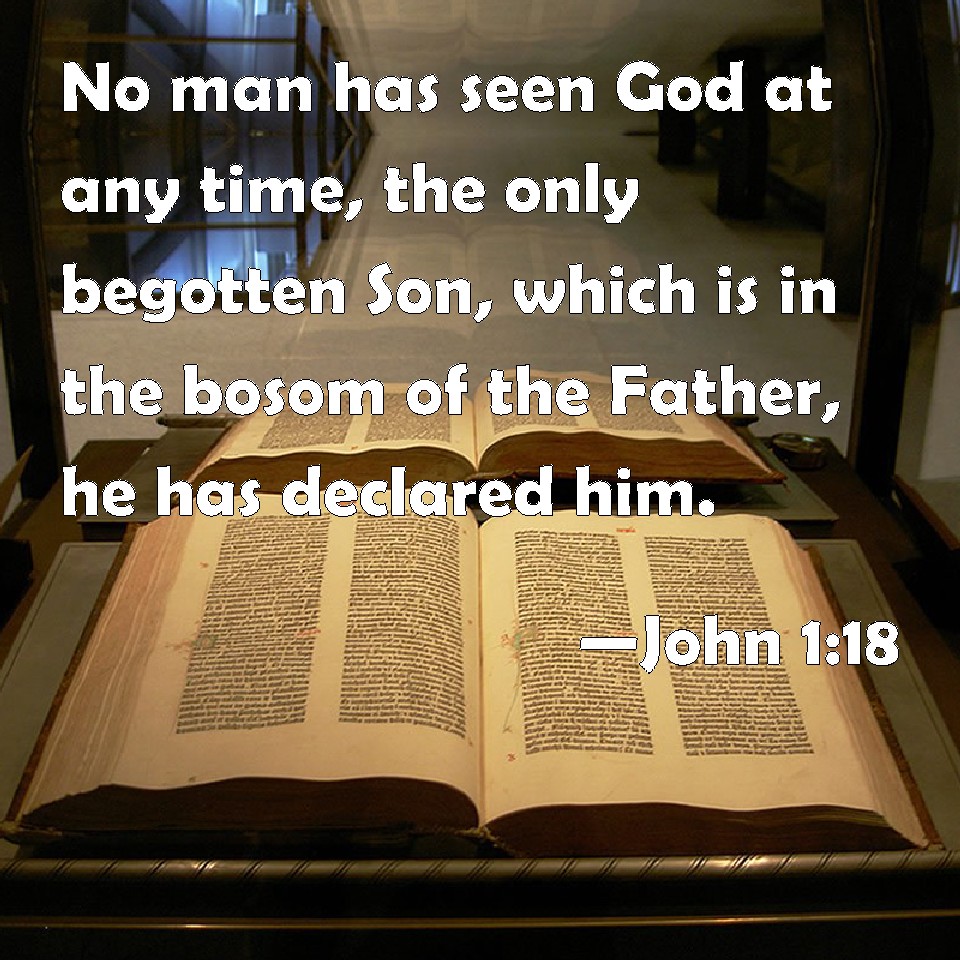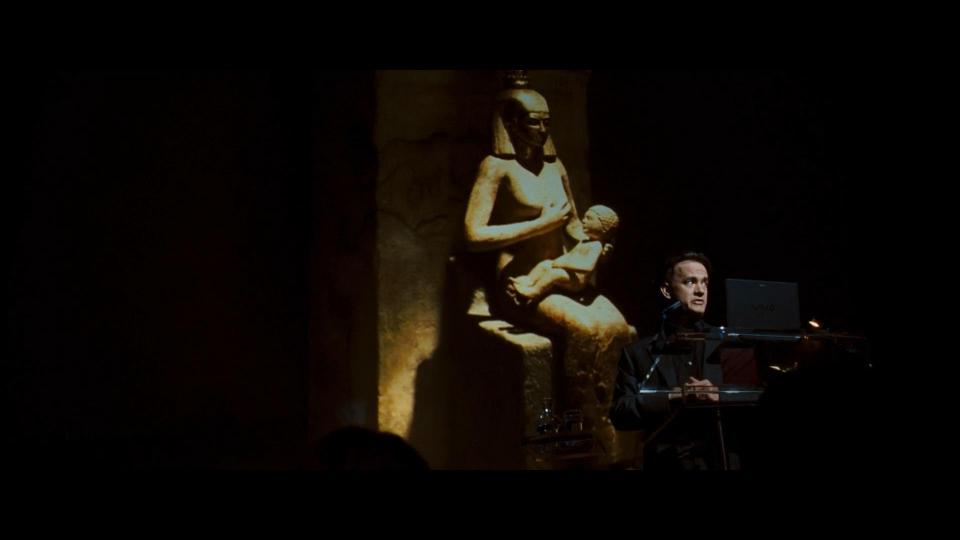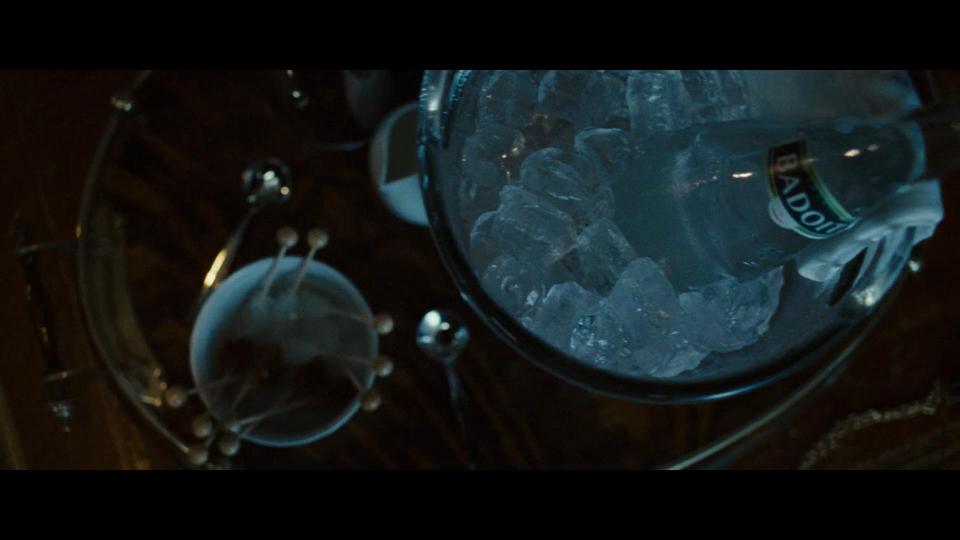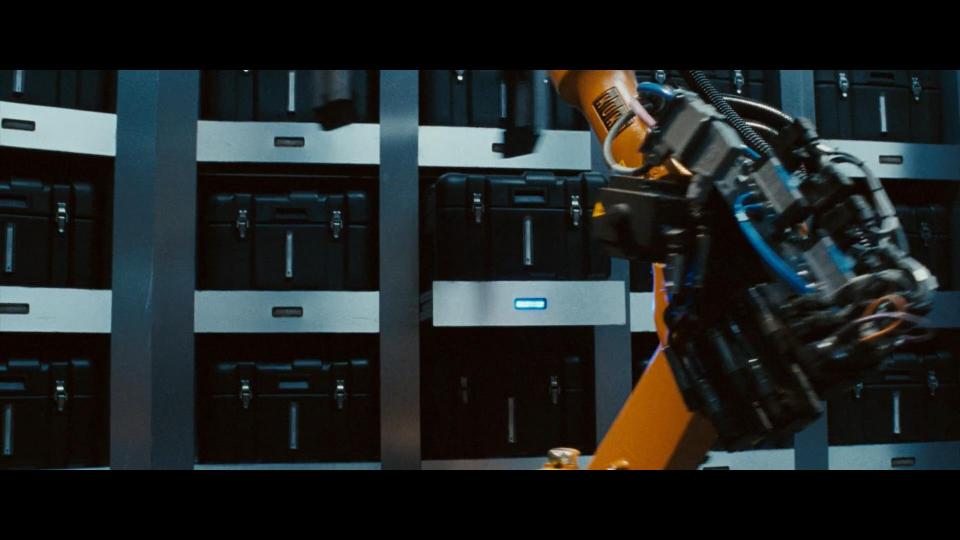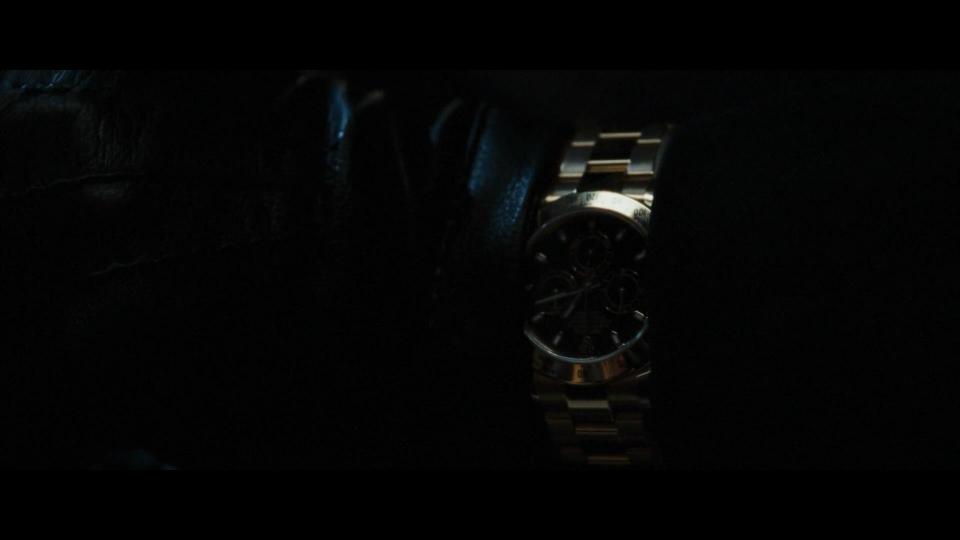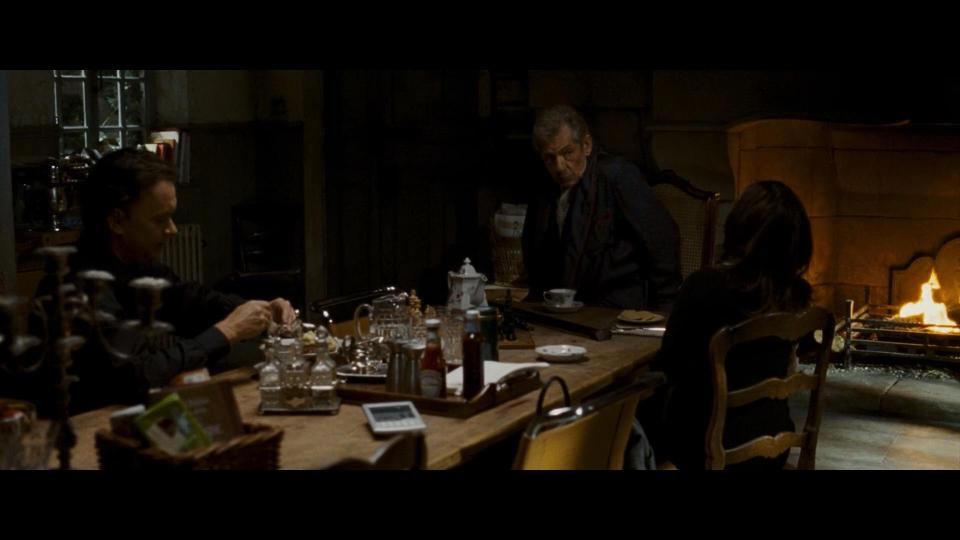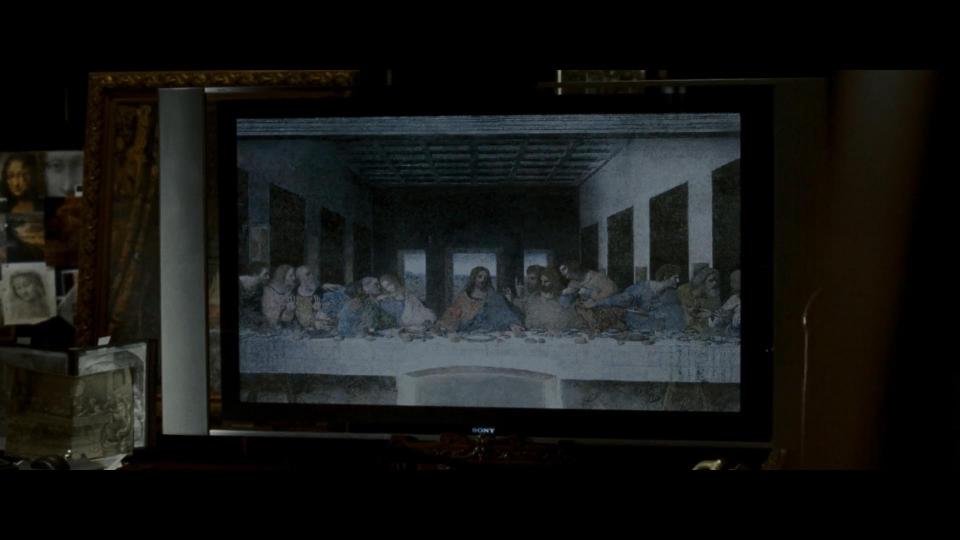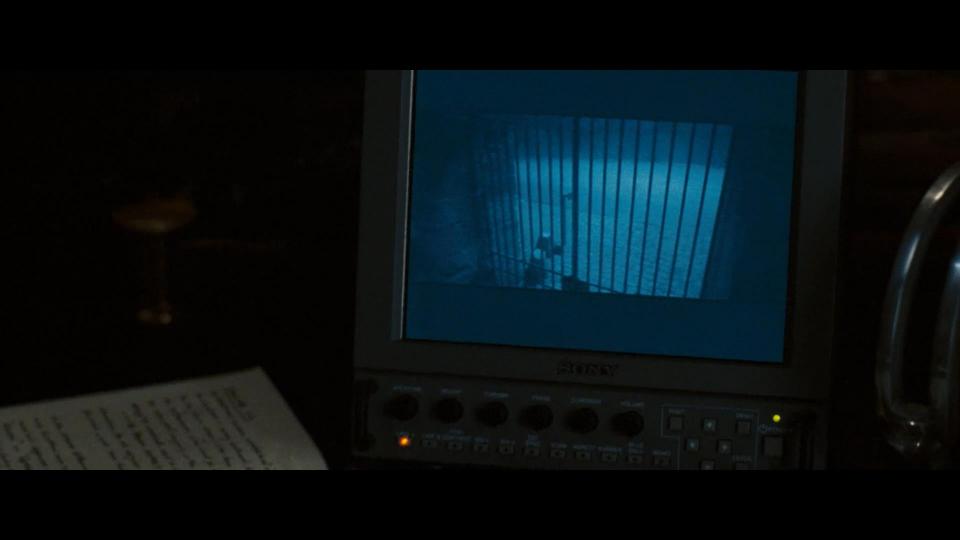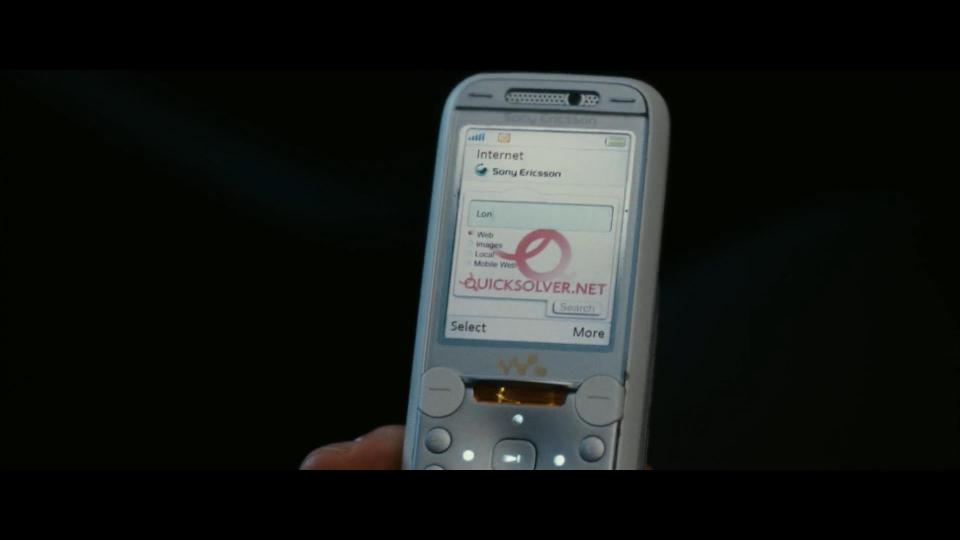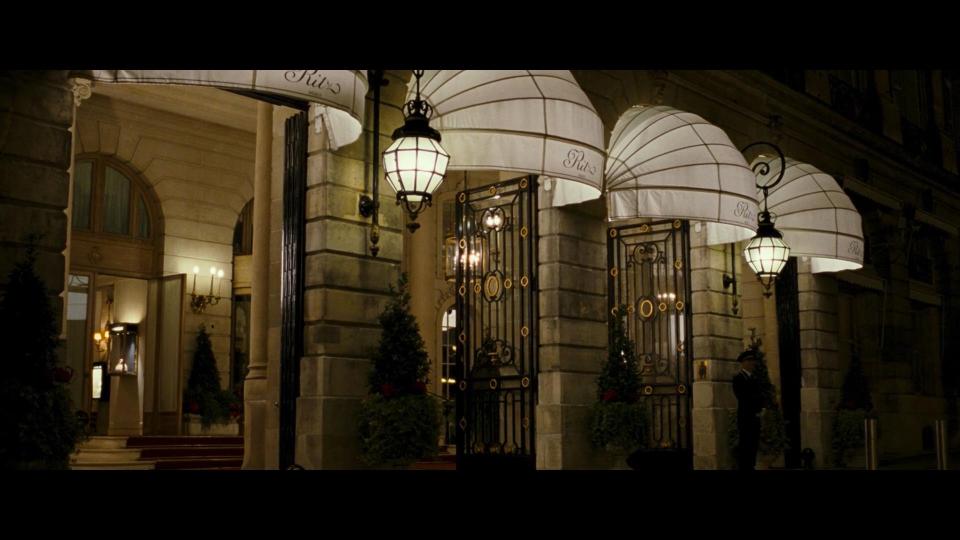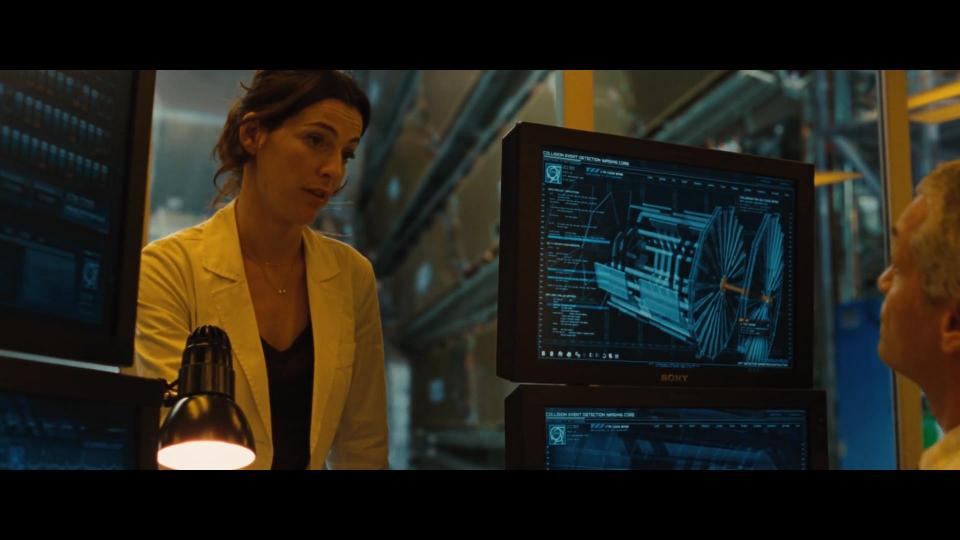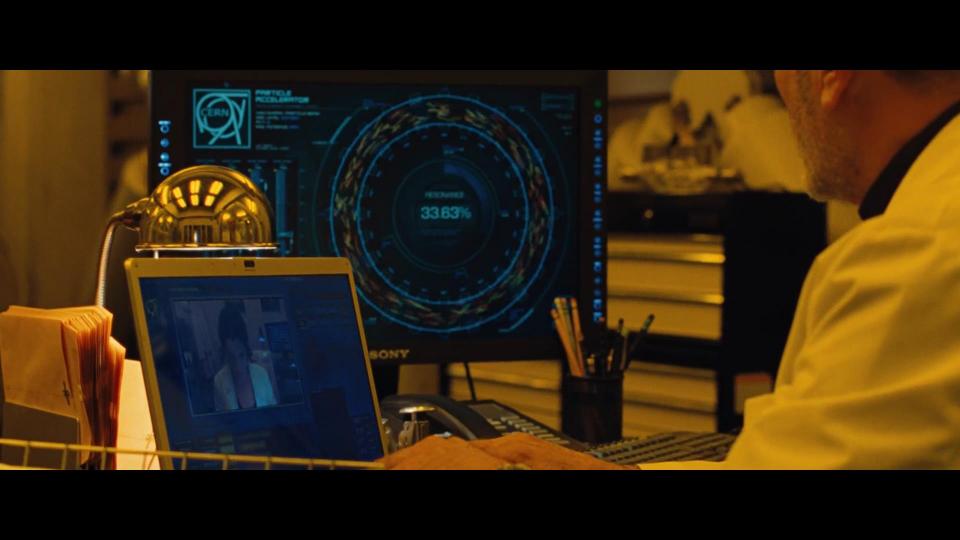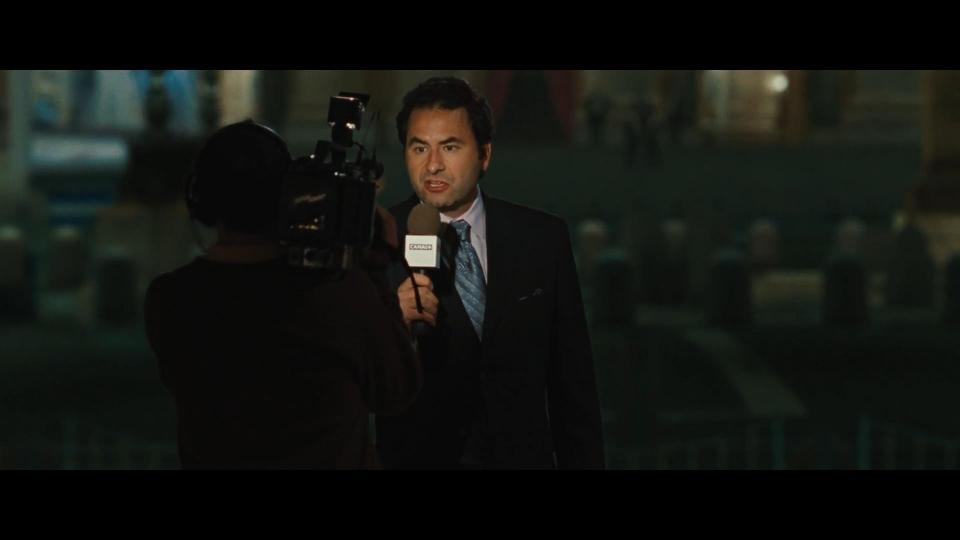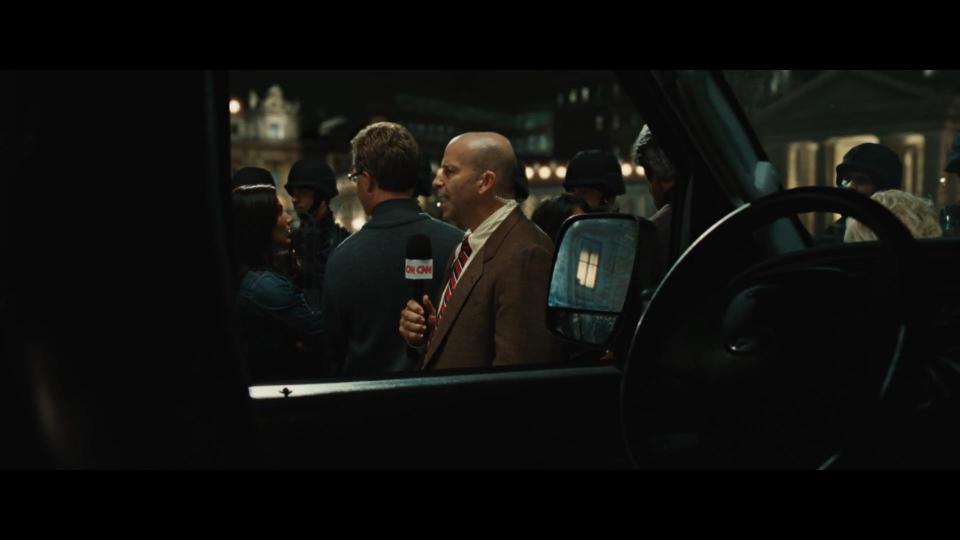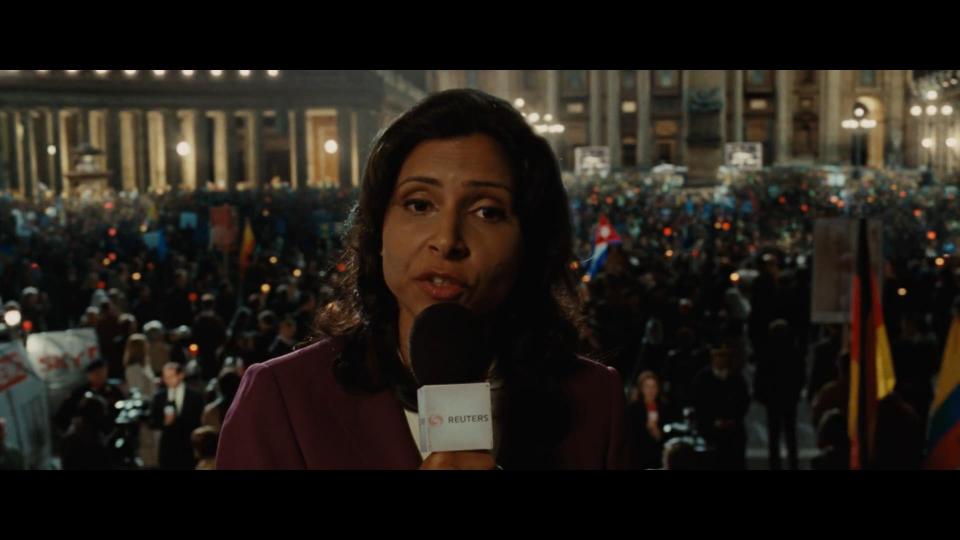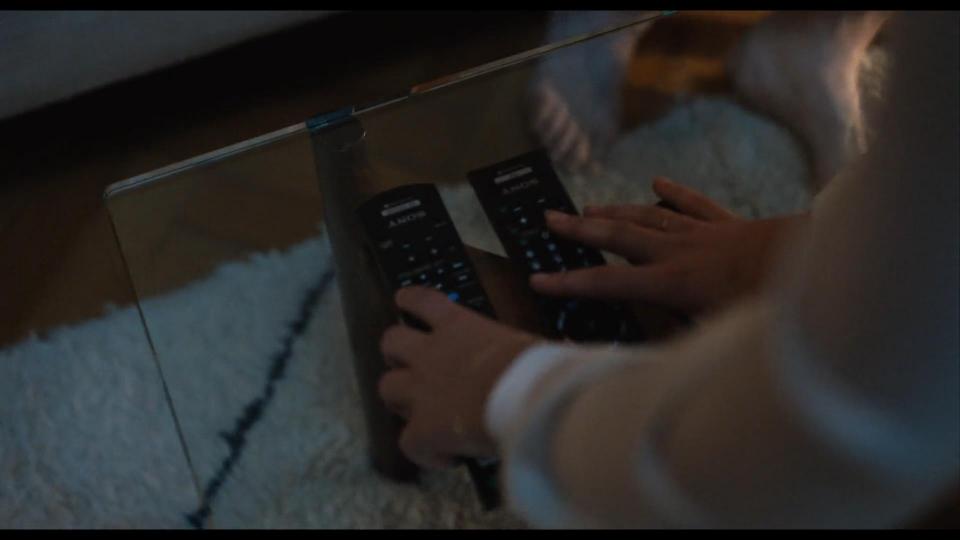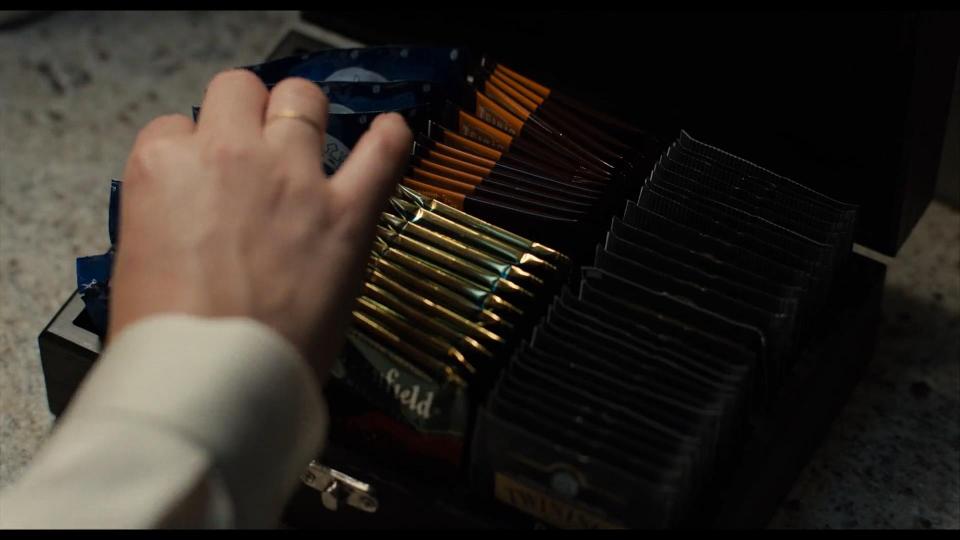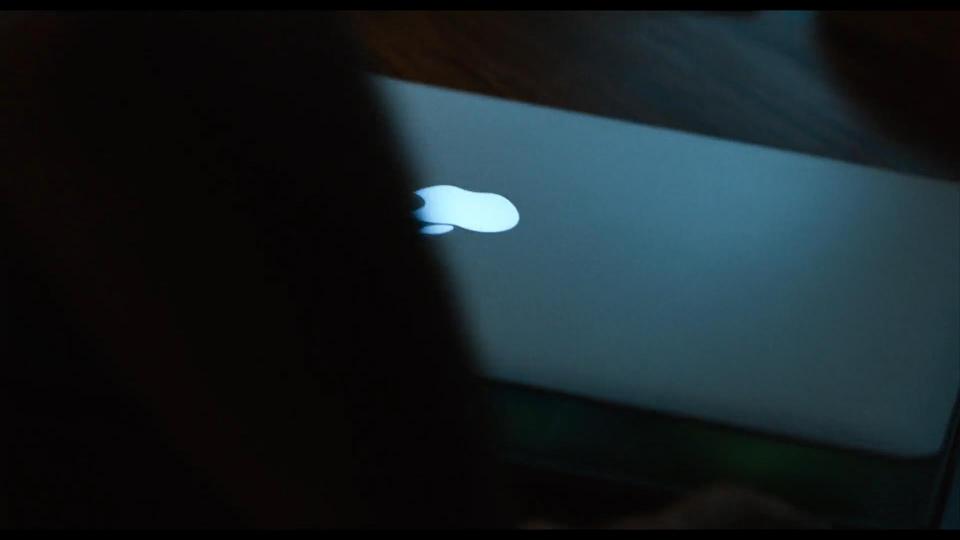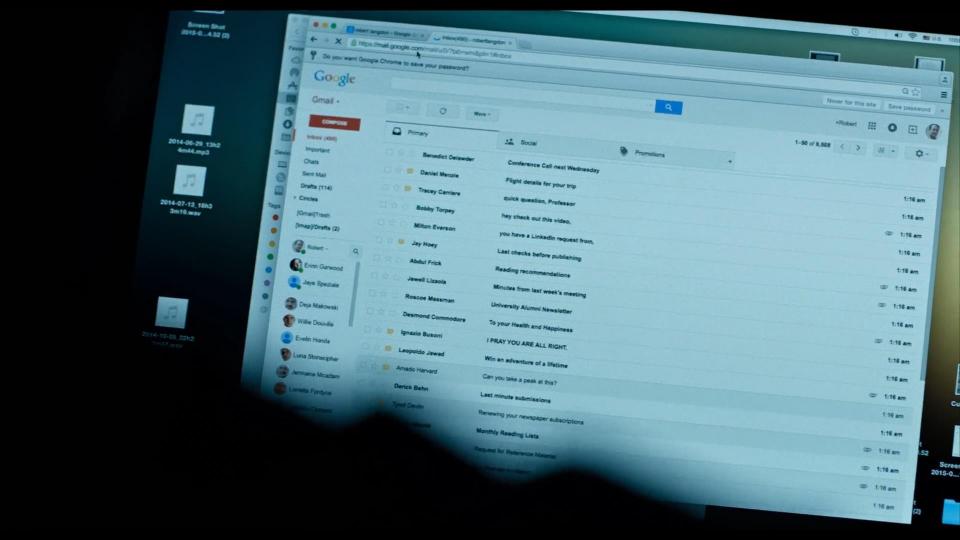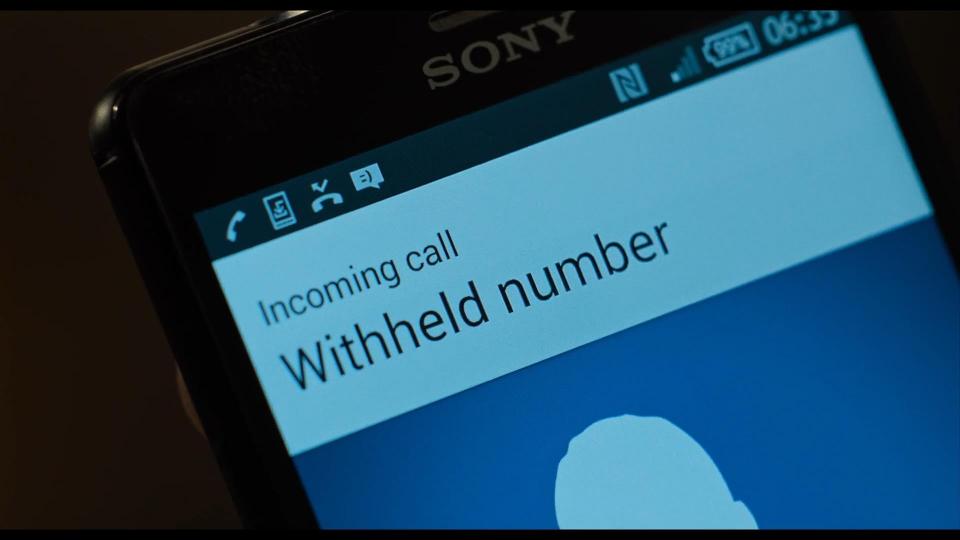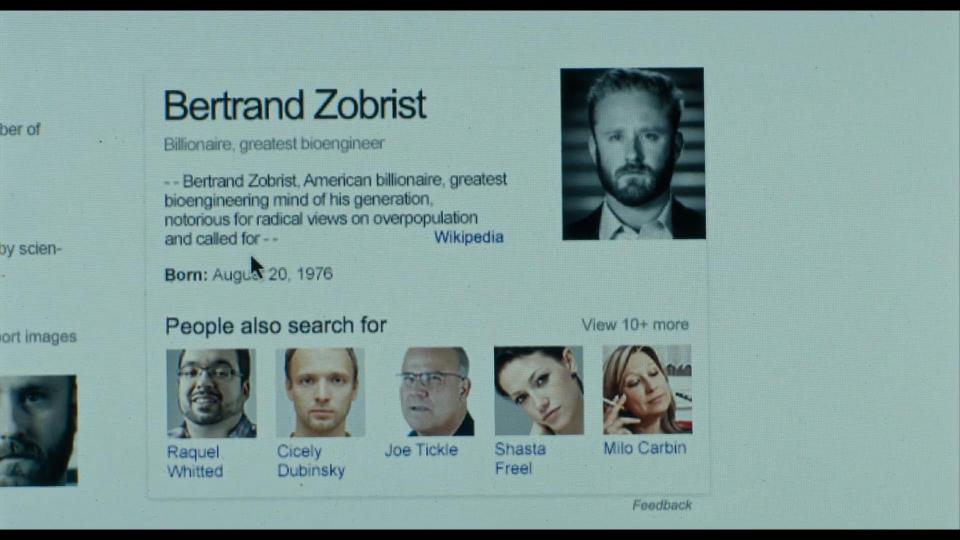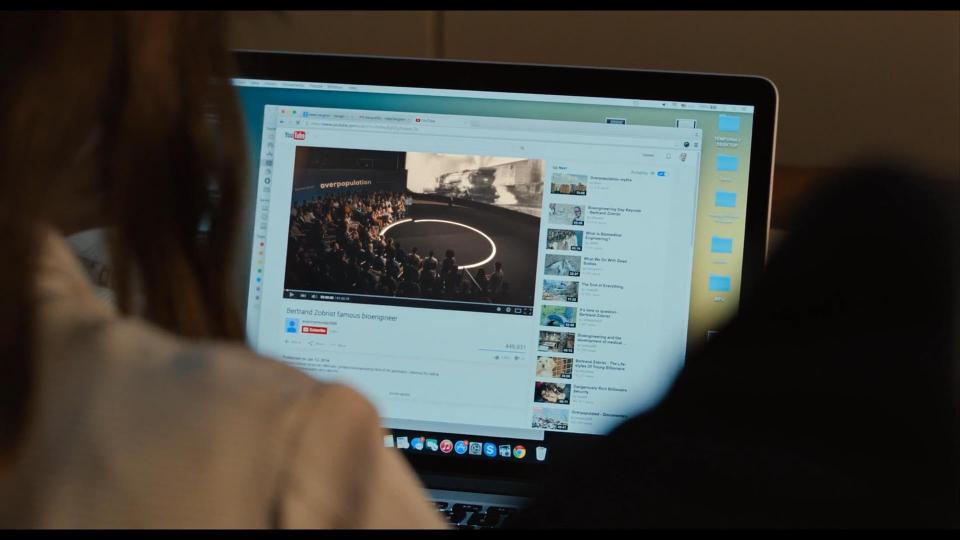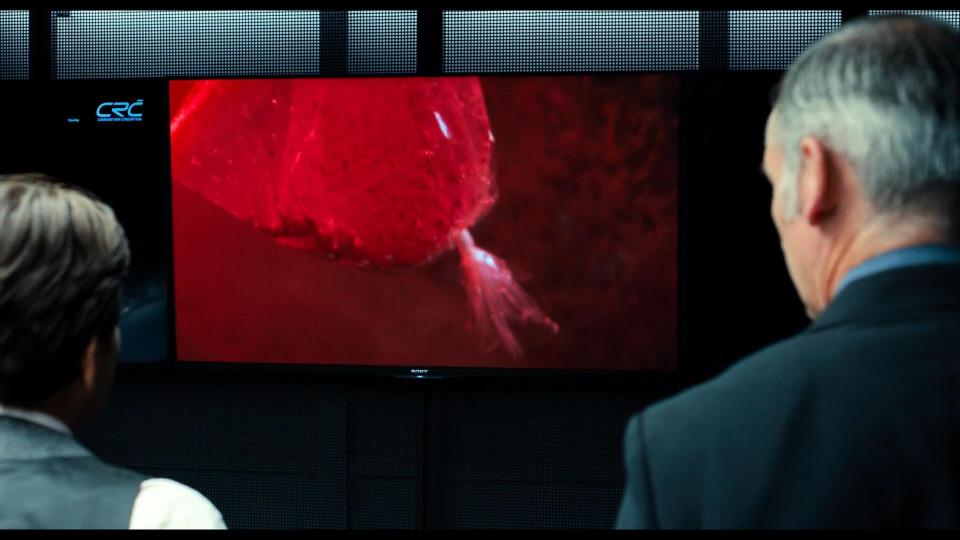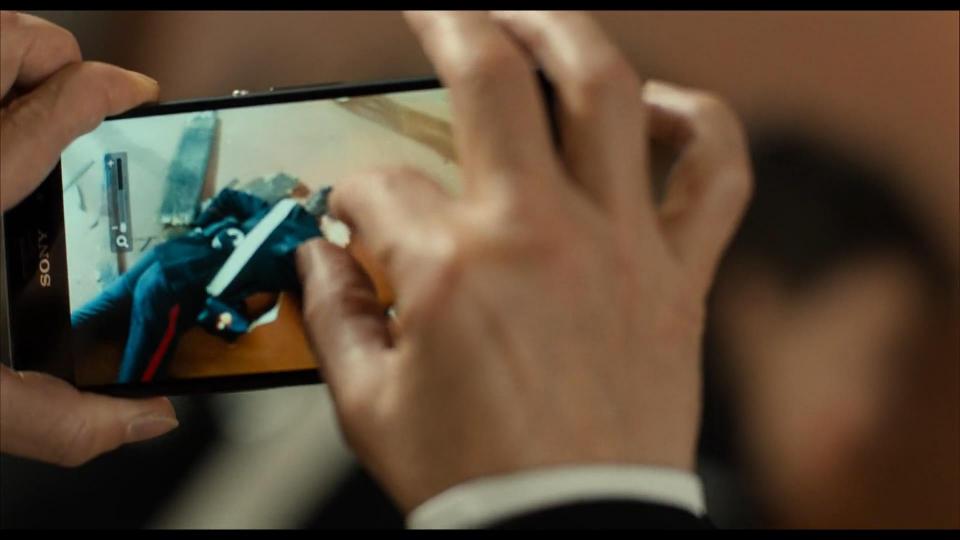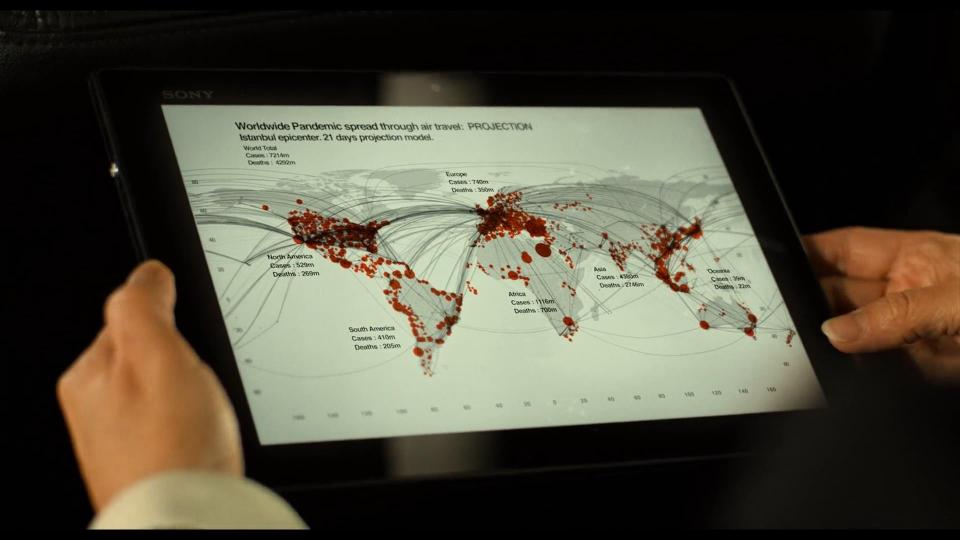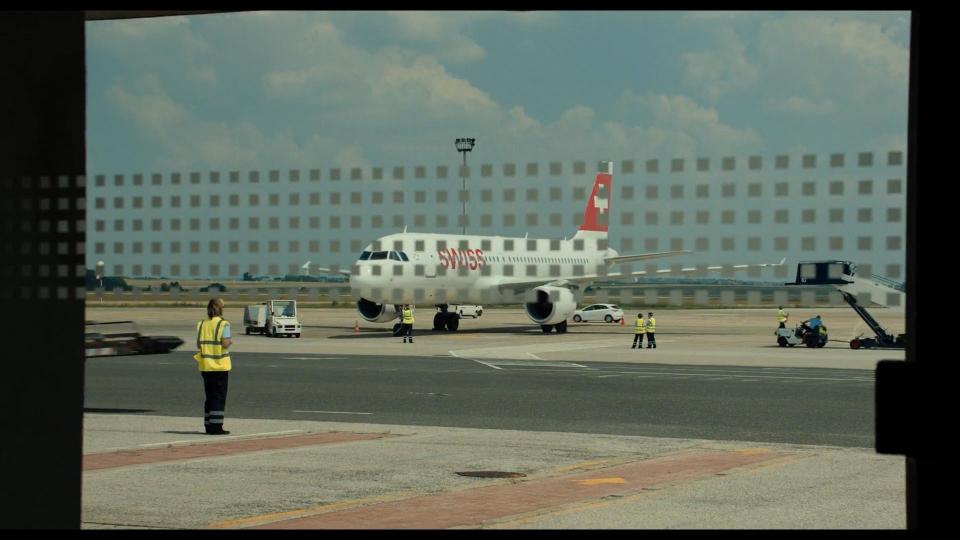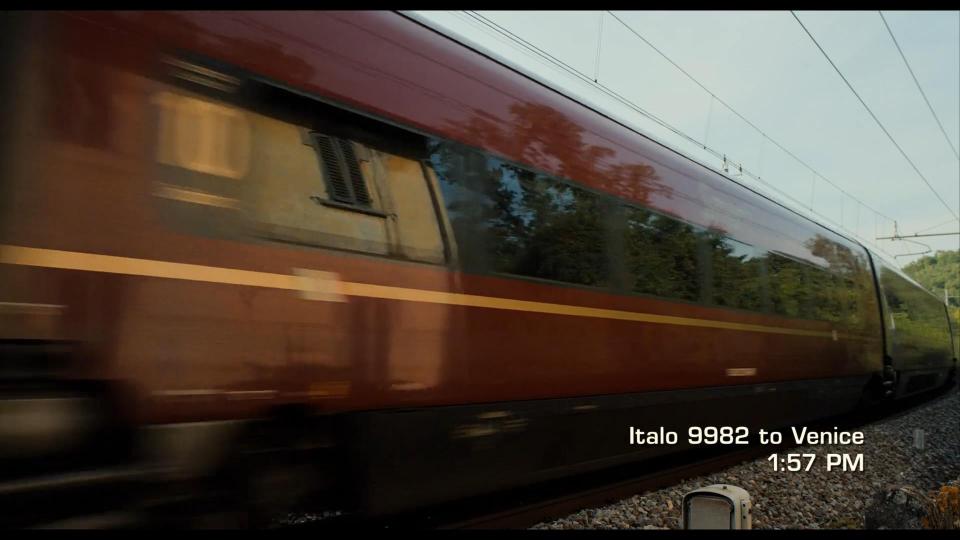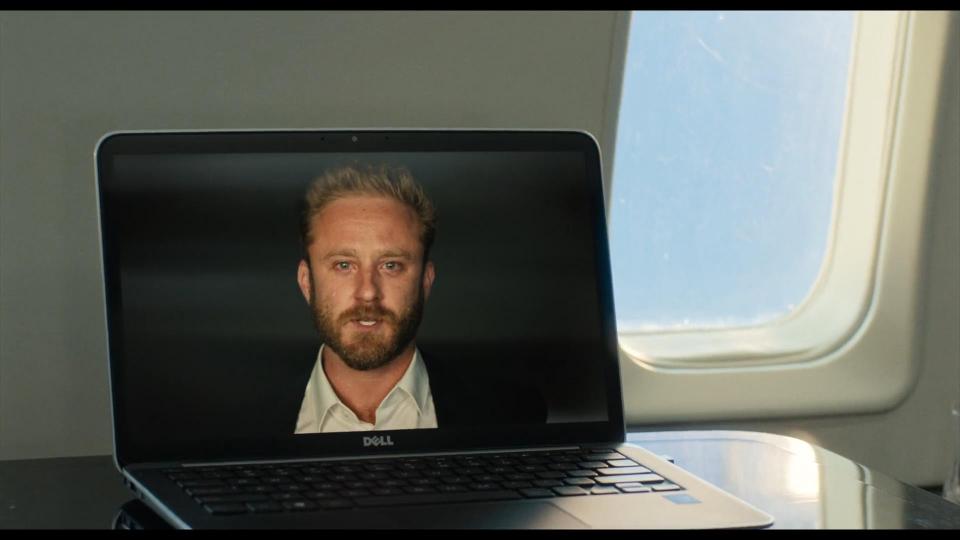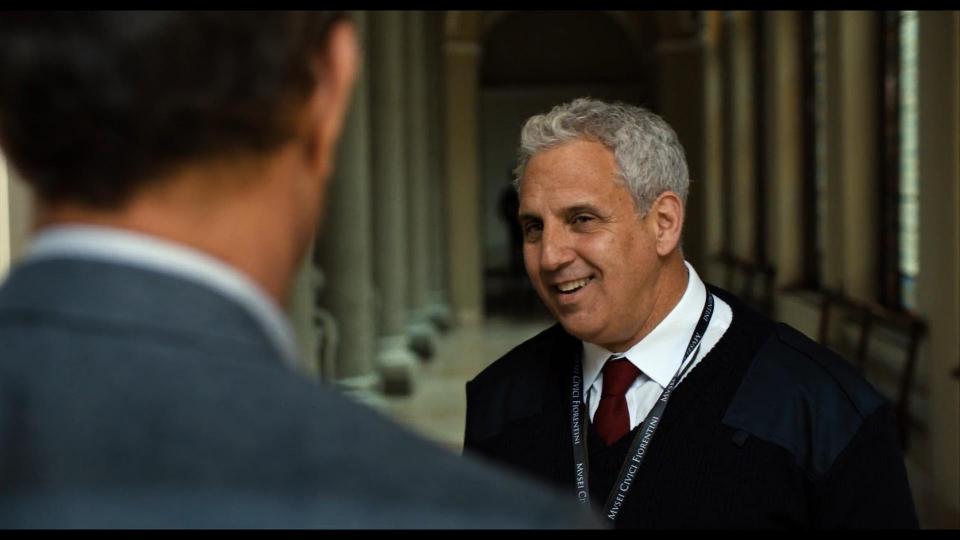|
|
General: BANK OF ZURICH SWISS DA VINCI CODE FIBONACCI SEQUENCE CERN
Elegir otro panel de mensajes |
|
|
Logo of the bank by John Langdon
The Depository Bank of Zurich is the most hi-tech bank in the world as it interacts with its clients anonymously. It can be found in France at 24 Rue Haxo. It's symbol is a red, equilateral cross. Its official website is part of the Da Vinci Code Webquest.
Founded in 1967, the Depository Bank of Zurich is a twenty-four-hour GeldshrankeBanke offering the full modern array of anonymous services in the tradition of the Swiss numbered account. Maintaining offices in Zurich, Kuala Lumpur, New York, and Paris, the bank has expanded its services in recent years to offer anonymous computer source-code escrow services, faceless digitized backup, and LagernAnonymen— blind drop services. Clients wishing to store anything from stock certificates to valuable paintings can deposit their belongings anonymously, withdrawing items at anytime, also in total anonymity. Clients also have access to 24-hour live video-feeds of the contents of their deposit boxes.
People Involved
Jacques Saunière - former curator of the Louvre Museum. His key has the initials PS on it, which stood for Priory of Sion and Princess Sophie. Inside his box, he has 2 cryptexes, one within another. His password is the Fibonacci Sequence.
André Vernet - president of the bank of Zurich
Robert Langdon - opened Saunière's account upon implied request given at the Louvre at around 11 pm.
Sophie Neveu - was with Robert Langdon.
A message from Bank President, Andre Vernet
The Paris Branch of the Zurich Depository Corp services customers from all over the world. Our discreet staff is accessible around the clock to attend to all of your anonymous depository and banking needs. No matter what asset you have on deposit with us, your trust is our greatest treasure.
Webquest Answers
As mentioned earlier, the website is part of the Da Vinci Code Webquest. For the answer for this particular phase of the quest, type Marie Denarnaud for the name and the fibonacci sequence found in chapter 44 of the Da Vinci Code for the password:
1123581321
More Information
The Depository Bank of Zurich is a fictional Geldschrankbank (secure depository facility) appearing in the 2003 novel Da Vinci Code (Book) The Da Vinci Code by Dan Brown. The address of its Paris branch is 24 rue Haxo, and according to the book, it also has branches in Kuala Lumpur, New York, and Zurich. The president of its Paris branch is André Vernet. The bank allows for 24-hour fully-automated access to anonymous accounts and deposits safe vaults.
Random House, which published The Da Vinci Code, created a mock web site for the bank as part of an advertising campaign for the book. The site includes a "customer" login feature as part of the solution to a contest involving the promotion of the book.
The information above is taken from here.
|
|
|
|
|
Bern Museums: Einstein’s House
By Emma Marshall
There are several Bern museums that you can visit in the Swiss capital.
However, if you’re in this lovely city, a World Heritage Site, and the place where Albert Einstein developed his theory of relativity, you really must put a visit to the house where he lived on your sightseeing list.
Read on for more information on visiting this Bern museum and for my thoughts on what I learnt here.
This post contains affiliate links
Bern Museums: where is the Einstein house?
The Albert Einstein house is situated in Bern old town, a UNESCO World Heritage Site.
It’s on Kramgasse (specifically No.49). This is the main street that runs the length of the old town and which means “Grocer’s Alley”. It’s a lovely medieval street and you’re bound to visit it on a trip to Bern.
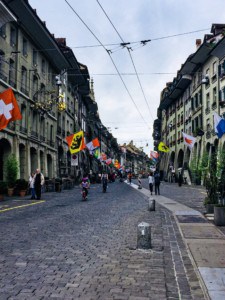 Kramgasse street There are long covered alleyways here, with small boutique shops under the arches. There’s also a smattering of cosy cafes and bars in basements, which would be perfect in the cold winter months.
The street is also is interspersed with a number of ornate, colourful, and quite unique fountains. At one end, you can also find the 13th century clock tower (Zytlogge). This is beautiful and lovely when lit up at night.
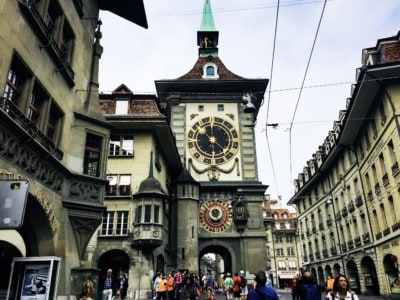 Bern clock tower in the old town 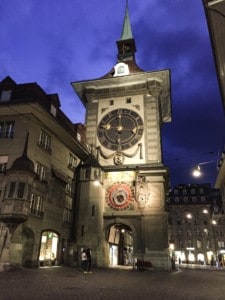 The Bern clock tower at night This is another must-see sight in Bern. So much so that you can book tours to learn more about the clock and to go inside. Click here to learn more.
You can also book walking tours of the old town: click here.
Bern Museums: why visit the Einstein House?
Einstein is not the only famous or noteworthy person connected to this Swiss canton. Others include the Nobel Prize winner, Emil Kocher, and the Bond actress Ursula Andress.
However, he is the one that the city – understandably – is most proud of.
This is because it was in Bern that he first sowed the seeds for his famed work on the General Theory of Relativity. He himself said: “Those were good times, the years in Bern”, of his seven years in the Swiss capital.
So when deciding which Bern museum to visit, you really should include one about Einstein.
You can actually learn about Einstein’s time in the Swiss capital in two Bern museums. Aswell as Einstein’s house, there is the Bern Historical Museum.
According to the website, this has “some 550 original objects and replicas, 70 films and numerous animations outline the biography of the genius and his ground-breaking discoveries”.
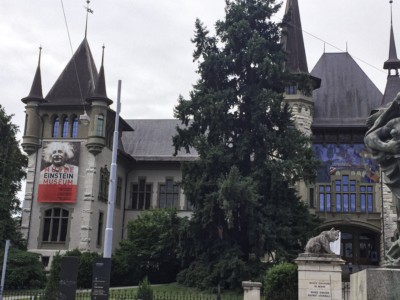 Outside of the Bern Historical Museum, a Bern Museum you can visit on a trip here As we had limited time in the capital, we chose to focus on Einstein’s house and the museum that is housed there. However, if I returned, I would definitely visit the Bern Historical Museum as well.
Bern Museums: The Einstein house
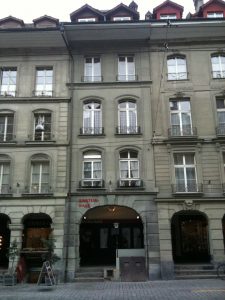 Outside Einstein’s House (picture courtesy of AEG Bern) Outside Einstein’s House (picture courtesy of AEG Bern)The Einstein House is the flat that Einstein occupied from 1903 to 1905 with his wife, Mileva Maric. Mileva was herself a promising physicist from Serbia.
The house is very small, so this is a Bern museum that can get easily crowded. I’d therefore recommend visiting early to ensure you get in.
The museum has a large selection of exhibits and photographs from the couple’s life together. On the first floor, these are displayed around the flat as it presumably was laid out at the time.
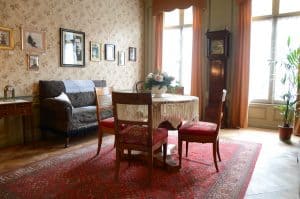 Inside Einstein’s House (picture courtesy of AEG Bern) Inside Einstein’s House (picture courtesy of AEG Bern)A small table is in the middle of the room where the family would have eaten. Chairs are where they would have relaxed, and there is a writing bureau, and cabinet housing a tea service and coffee pots.
All are overlooked by fascinating old photos of the family that hang on the walls and that depict different chapters of their life.
Upstairs, there is an informative short film. This draws on archive footage, that charts Einstein’s life from his early days through to later years. Make sure you watch this – it is essential viewing. It really brings alive the life of the man.
Bern Museums: What’s interesting about this particular museum?
Einstein’s work
The museum is interesting on several levels. Firstly, for what you learn about Einstein’s great work and the foundations for this.
His first job was with the Swiss Patent Office which he held down whilst simultaneously writing his scientific papers. These included the forerunner to his work on the Theory of Relativity and another which won him a Nobel Prize in 1921.
He then moved into academia at the University of Bern before moving to Zurich. There were other stints in Prague and Berlin, before his later life spent in the United States.
Einstein’s personal life
This Bern Museum is also interesting for the insight it gives you into the personal life of Einstein. I found this utterly engrossing.
We all grow up knowing that Einstein is significant for his scientific work and discoveries. What we know less about (or certainly I knew less about) are the life stories running alongside in the background.
Much of this revolves around Einstein’s personal relationships and the consequences of these. Some of these are very sad. For example, he had a child born out of wedlock and a second relationship while still married.
He married Mileva Malic in 1903, but had in fact had a daughter, Leiserl, with Mileva the previous year. Leiserl was born in Mileva’s home country of Serbia. She was left to grow up with her grandparents, presumably because she was illegitimate.
According to the museum exhibition, Einstein himself never met his daughter. Her sheer existence was kept secret during his lifetime. To this day what happened to Liserl is a mystery.
Mileva and Einstein went on to raise two sons, Hans Albert and Eduard. They remained married until 1919 when Einstein remarried – to his cousin, Elsa Lowenthal. It seems he had forged a relationship with her some time before his marriage to Mileva formally dissolved.
Einstein’s move to the USA
The museum also tells the story of Einstein’s move to the USA. This coincided with the rise of the Nazi party in Germany and the difficulties that this presented to him.
Most notably these included the impossibility of working there as a German Jew. Scores of Jewish academics were being forced out of work, Nazi book burnings were taking place, and Einstein was vocalising his views on the treatment of Jews within Germany.
He therefore took up a role at Princeton University in the USA, and it is there that he remained until his death in 1955.
Einstein’s wife
Although this Bern museum is only small, you can learn a great deal in a short time, some of it possibly unexpected. And whilst I went to learn more about Einstein, I came away with a long lasting impression of his wife.
I developed an equal admiration for his wife, partly because of all that she seemed to go through during her time with Einstein. This included a child that was given up, a broken marriage and the forfeiture of her own academic ambitions.
It also seems that Mileva may have been important not only for her support of Einstein’s ambitions, but more directly for her role in actually furthering these.
Some think that letters between the couple show her contribution. It is thought that she contributed in the early days to Einstein’s ground-breaking work and that her own expertise in physics is reflected in some of his work.
So, in addition to learning a lot about Einstein himself, I learnt a lot about the wife of one of the world’s greatest scientists. I came away with a real sense that the adage about there being a great woman behind every man was really true of Mileva.
Bern Museums: visiting the Einstein house
Opening times
You can visit the house between 1st February and 21st December. Exceptions include Easter, Pentecost and Switzerland’s National Day (1st August).
Opening times are 9am to 5pm. Entry costs CHF 6 for adults (reduced rates apply for students, pensioners and those between 8 and 15 years: CHF 4.50, 4.50 and 3, respectively).
Getting to Bern
Bern has an airport and you can catch flights here from various cities in Germany, as well as from London (City airport), Vienna and Palma.
However, it is smaller than both the Swiss airports in Geneva and Zurich that have more regular flights. Bern is just over an hour via train from Zurich airport and around two hours to Geneva airport. You might therefore find it more convenient to catch a flight to one of these airports.
You can also visit Bern from other Swiss cities. Lausanne and Lucerne are both around an hour away by train. Interlaken is around 45 mnutes and Nuechatel just under 50 minutes.
If public transport is not your thing, you can also book day trips to Bern. Click here for ideas.
Other Bern Museums to visit
Aside from the history museums, there are other Bern museums to visit.
These include a fine arts museum, a communications museum and a Swiss alpine museum – see http://www.museen-bern.ch/en/for further information.
If you enjoy short trips to Europe, you may also find some of my other posts of interest:
https://www.travelonatimebudget.co.uk/switzerland/bern-museums-einsteins-house/ |
|
|
|
|
Columbus and the Templars
Was Columbus using old Templar maps when he crossed the Atlantic? At first blush, the navigator and the fighting monks seem like odd bedfellows. But once I began ferreting around in this dusty corner of history, I found some fascinating connections. Enough, in fact, to trigger the plot of my latest novel, The Swagger Sword.
To begin with, most history buffs know there are some obvious connections between Columbus and the Knights Templar. Most prominently, the sails on Columbus’ ships featured the unique splayed Templar cross known as the cross pattée (pictured here is the Santa Maria):
Additionally, in his later years Columbus featured a so-called “Hooked X” in his signature, a mark believed by researchers such as Scott Wolter to be a secret code used by remnants of the outlawed Templars (see two large X letters with barbs on upper right staves pictured below):
Other connections between Columbus and the Templars are less well-known. For example, Columbus grew up in Genoa, bordering the principality of Seborga, the location of the Templars’ original headquarters and the repository of many of the documents and maps brought by the Templars to Europe from the Middle East. Could Columbus have been privy to these maps? Later in life, Columbus married into a prominent Templar family. His father-in-law, Bartolomeu Perestrello (a nobleman and accomplished navigator in his own right), was a member of the Knights of Christ (the Portuguese successor order to the Templars). Perestrello was known to possess a rare and wide-ranging collection of maritime logs, maps and charts; it has been written that Columbus was given a key to Perestrello’s library as part of the marriage dowry. After marrying, Columbus moved to the remote Madeira Islands, where a fellow resident, John Drummond, had also married into the Perestrello family. Drummond was a grandson of Scottish explorer Prince Henry Sinclair, believed to have sailed to North America in 1398. It is, accordingly, likely that Columbus had access to extensive Templar maps and charts through his familial connections to both Perestrello and Drummond.
Another little-known incident in Columbus’ life sheds further light on the navigator’s possible ties to the Templars. In 1477, Columbus sailed to Galway, on the west coast of Ireland, from where the legendary Brendan the Navigator supposedly set sale in the 6th century on his journey to North America. While there, Columbus prayed at St. Nicholas’ Church, a structure built over an original Templar chapel dating back to around the year 1300. St. Nicholas’ Church has been compared by some historians to Scotland’s famous Roslyn Chapel, complete with Templar tomb, Apprentice Pillar, and hidden Templar crosses. (Recall that Roslyn Chapel was built by another grandson—not Drummond—of the aforementioned Prince Henry Sinclair.) According to his diary, Columbus also famously observed “Chinese” bodies floating into Galway harbor on driftwood, which may have been what first prompted him to turn his eyes westward. A granite monument along the Galway waterfront, topped by a dove (Columbus meaning ‘dove’ in Latin), commemorates this sighting, the marker reading: On these shores around 1477 the Genoese sailor Christoforo Colombo found sure signs of land beyond the Atlantic.
In fact, as the monument text hints, Columbus may have turned more than just his eyes westward. A growing body of evidence indicates he actually crossed the north Atlantic in 1477. Columbus wrote in a letter to his son: “In the year 1477, in the month of February, I navigated 100 leagues beyond Thule [to an] island which is as large as England. When I was there the sea was not frozen over, and the tide was so great as to rise and fall 26 braccias.” We will turn later to the mystery as to why any sailor would venture into the north Atlantic in February. First, let’s examine Columbus’ statement. Historically, ‘Thule’ is the name given to the westernmost edge of the known world. In 1477, that would have been the western settlements of Greenland (though abandoned by then, they were still known). A league is about three miles, so 100 leagues is approximately 300 miles. If we think of the word “beyond” as meaning “further than” rather than merely “from,” we then need to look for an island the size of England with massive tides (26 braccias equaling approximately 50 feet) located along a longitudinal line 300 miles west of the west coast of Greenland and far enough south so that the harbors were not frozen over. Nova Scotia, with its famous Bay of Fundy tides, matches the description almost perfectly. But, again, why would Columbus brave the north Atlantic in mid-winter? The answer comes from researcher Anne Molander, who in her book, The Horizons of Christopher Columbus, places Columbus in Nova Scotia on February 13, 1477. His motivation? To view and take measurements during a solar eclipse. Ms. Molander theorizes that the navigator, who was known to track celestial events such as eclipses, used the rare opportunity to view the eclipse elevation angle in order calculate the exact longitude of the eastern coastline of North America. Recall that, during this time period, trained navigators were adept at calculating latitude, but reliable methods for measuring longitude had not yet been invented. Columbus, apparently, was using the rare 1477 eclipse to gather date for future western exploration. Curiously, Ms. Molander places Columbus specifically in Nova Scotia’s Clark’s Bay, less than a day’s sail from the famous Oak Island, legendary repository of the Knights Templar missing treasure.
The Columbus-Templar connections detailed above were intriguing, but it wasn’t until I studied the names of the three ships which Columbus sailed to America that I became convinced the link was a reality. Before examining these ship names, let’s delve a bit deeper into some of the history referred to earlier in this analysis. I made a reference to Prince Henry Sinclair and his journey to North American in 1398. The Da Vinci Code made the Sinclair/St. Clair family famous by identifying it as the family most likely to be carrying the Jesus bloodline. As mentioned earlier, this is the same family which in the mid-1400s built Roslyn Chapel, an edifice some historians believe holds the key—through its elaborate and esoteric carvings and decorations—to locating the Holy Grail. Other historians believe the chapel houses (or housed) the hidden Knights Templar treasure. Whatever the case, the Sinclair/St. Clair family has a long and intimate historical connection to the Knights Templar. In fact, a growing number of researchers believe that the purpose of Prince Henry Sinclair’s 1398 expedition to North America was to hide the Templar treasure (whether it be a monetary treasure or something more esoteric such as religious artifacts or secret documents revealing the true teachings of the early Church). Researcher Scott Wolter, in studying the Hooked X mark found on many ancient artifacts in North American as well as on Columbus’ signature, makes a compelling argument that the Hooked X is in fact a secret symbol used by those who believed that Jesus and Mary Magdalene married and produced children. (See The Hooked X, by Scott F. Wolter.) These believers adhered to a version of Christianity which recognized the importance of the female in both society and in religion, putting them at odds with the patriarchal Church. In this belief, they had returned to the ancient pre-Old Testament ways, where the female form was worshiped and deified as the primary giver of life.
It is through the prism of this Jesus and Mary Magdalene marriage, and the Sinclair/St. Clair family connection to both the Jesus bloodline and Columbus, that we now, finally, turn to the names of Columbus’ three ships. Importantly, he renamed all three ships before his 1492 expedition. The largest vessel’s name, the Santa Maria, is the easiest to analyze: Saint Mary, the Virgin Mary, the mother of Jesus. The Pinta is more of a mystery. In Spanish, the word means ‘the painted one.’ During the time of Columbus, this was a name attributed to prostitutes, who “painted” their faces with makeup. Also during this period, the Church had marginalized Mary Magdalene by referring to her as ‘the prostitute,’ even though there is nothing in the New Testament identifying her as such. So the Pinta could very well be a reference to Mary Magdalene. Last is the Nina, Spanish for ‘the girl.’ Could this be the daughter of Mary Magdalene, the carrier of the Jesus bloodline? If so, it would complete the set of women in Jesus’ life—his mother, his wife, his daughter—and be a nod to those who opposed the patriarchy of the medieval Church. It was only when I researched further that I realized I was on the right track: The name of the Pinta before Columbus changed it was the Santa Clara, Portuguese for ‘Saint Clair.’
So, to put a bow on it, Columbus named his three ships after the Virgin Mary, Mary Magdalene, and the carrier of their bloodline, the St. Clair girl. These namings occurred during the height of the Inquisition, when one needed to be extremely careful about doing anything which could be interpreted as heretical. But even given the danger, I find it hard to chalk these names up to coincidence, especially in light of all the other Columbus connections to the Templars. Columbus was intent on paying homage to the Templars and their beliefs, and found a subtle way of renaming his ships to do so.
Given all this, I have to wonder: Was Columbus using Templar maps when he made his Atlantic crossing? Is this why he stayed south, because the maps showed no passage to the north? If so, and especially in light of his 1477 journey to an area so close to Oak Island, what services had Columbus provided the Templars in exchange for these priceless charts?
It is this research, and these questions, which triggered my novel, The Swagger Sword. If you appreciate a good historical mystery as much as I, I think you’ll enjoy the story.
|
|
|
|
|
William Tell and The Templar Nation

The history of Switzerland is, at best, elusive. It is that way seemingly on purpose, with its origins murky. Its…
You must be logged in to view this content.
|
|
|
|
|
First Lady of The United States
Eleanor Roosevelt
Rolex Oyster Perpetual
I once heard a rumor that both U.S. President Franklin Roosevelt and Harry Truman wore Rolex watches. Of course, I spent a zillion hours looking for examples of them wearing Rolex watches, but to date the first U.S. President I documented wearing a Rolex was Dwight Eisenhower. When Nick Gould recently shared the following images with me of former First Lady, Eleanor Roosevelt wearing a Rolex Oyster Perpetual, I almost fell out of my chair. Nick mentioned Charlie Dunne shared them with him.
Eleanor Roosevelt is pictured below with her husband, President Roosevelt on January 20, 1941 as they return to the White House following his third term election.
Eleanor Roosevelt was one of the most beloved First Ladies of The United States and in the photo below we see the U.S. Presidents and First Ladies attending here funeral. From left to right we see Lady Bird Johnson, Jaqueline & John F. Kennedy, Lyndon Baines Johnson, Harry Truman, as well as Mamie and Dwight Eisenhower.
https://www.rolexmagazine.com/2021/02/first-lady-of-united-states-eleanor.html#/page/1 |
|
|
|
|
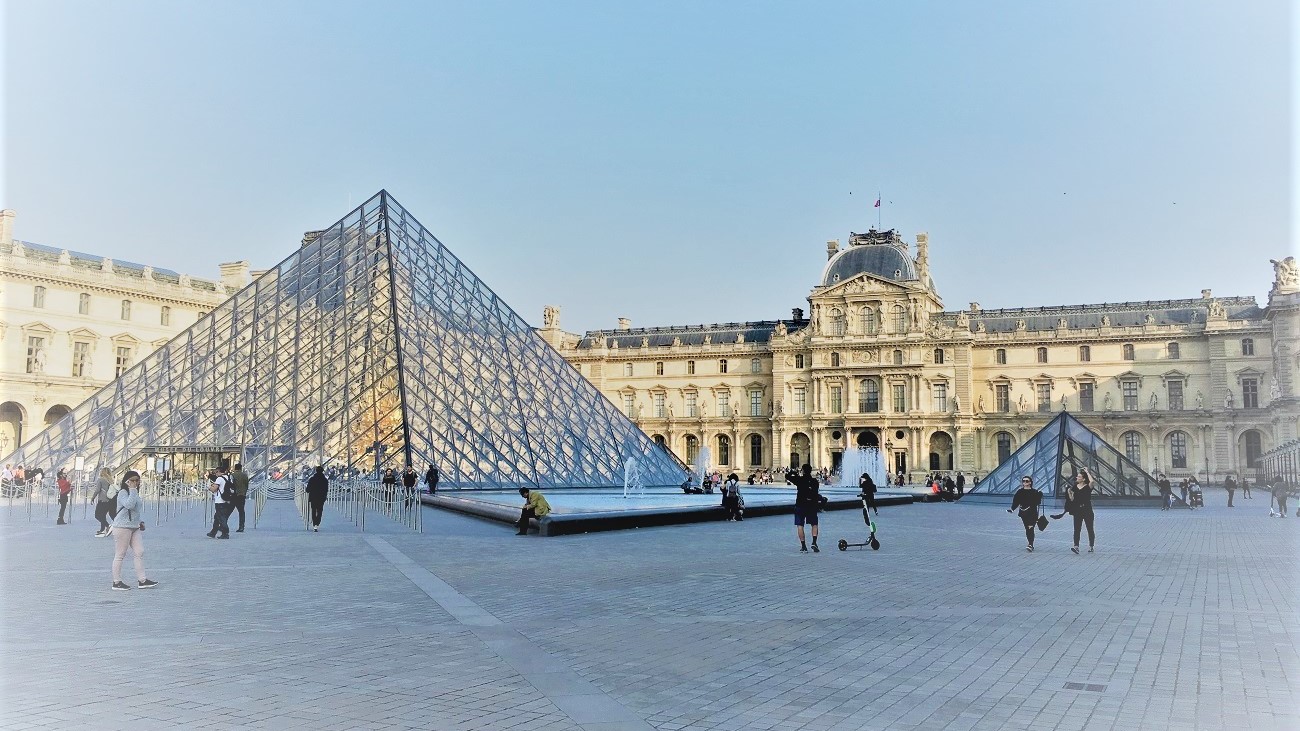
I love the adventure stories with twisted plots, mysteries, puzzles. That is why I love the stories created by Dan Brown and his major character Professor Robert Langdon who was very well played by Tom Hanks in the series of successful movies. Moreover, in my travel adventures I managed to visit most of the countries, places, museums, etc, and even CERN, which are described in the books and movies. And when I watch the movies I travel back in time together with Professor Langdon.
So, today I invite you to solve great mysteries of Leonardo, Illuminati, and Dante. It’s time to refresh your knowledge of history and arts. Welcome aboard!
Jacques Saunière, a Louvre curator, is pursued through the Grand Gallery by an albino Catholic monk named Silas, who demands the location of the Priory’s “keystone” to find and destroy the Holy Grail. Saunière gives him a false lead and is murdered. The police find his body posed like Da Vinci’s Vitruvian Man. Police captain Bezu Fache has his lieutenant, Jérôme Collet, summon American symbologist Robert Langdon, who is in Paris for a lecture on the interpretation of symbols, to examine Saunière’s body.
Langdon is shown the body and a secret message, readable only by blacklight. It contains an out-of-order Fibonacci sequence. Sophie Neveu, a police cryptographer and Saunière’s granddaughter, tells Langdon that Fache planted a tracker on him after finding the words, “P.S. Find Robert Langdon” at the end of Saunière’s secret message. Fache believes that Langdon murdered Saunière. Sophie throws away the tracker, distracting the police while they sneak around the Louvre, finding more clues in Leonardo da Vinci’s works. Langdon deduces that Saunière was the grand master of the Priory of Sion. And our adventure begins.
We meet Professor Robert Langdon for the first time during his lecture. He uses Sony laptop for his presentation.
In one of the next scenes of the movie we can clearly see the van with Bosch logo. Same is for the famous French water – Badoit. We can see it in a bucket full of ice.
When Robert Langdon and Sophie Neveu (Audrey Tautou) come to the bank to retrieve the cryptex, we can see how KUKA robot picks the right box that belonged to Jacques Saunière. When the bank employee helps the main characters to pass the police, we can get a glimpse of his Rolex watch.
At Sir Leigh Teabing’s (Ian McKellen) house our guests learn more about The Last Supper painting secrets. Their host is also a fan of Sony, so we may see various TV sets and displays in the house. While enjoying their evening tea, we can as well see Heinz there, of course.
When Robert Langdon and Sophie look for a tomb in London, they borrow a Sony Ericsson smartphone to search for more information.
In the final scene of the movie we see that Robert lives in Ritz hotel in Paris, and from there he starts his evening walk to follow the Arago medallions and come to the Louvre.
The Catholic Church mourns the sudden death of Pope Pius XVI, and prepares for the papal conclave to elect his successor in Vatican City. Father Patrick McKenna (Ewan McGregor), the camerlengo, takes temporary control of the Vatican during the sede vacante period.
Meanwhile, at CERN, scientists Father Silvano Bentivoglio and Dr. Vittoria Vetra (Ayelet Zurer) create three canisters of antimatter. As Vetra goes to evaluate the experiment, she discovers that Silvano has been murdered, and one of the canisters was stolen. Shortly thereafter, four of the preferiti, the favored candidates to be elected pope, are kidnapped by a man claiming to represent the Illuminati. He sends the Vatican a warning, claiming he will murder each of the cardinals from 8 p.m. to midnight, when the stolen antimatter will explode and destroy the city, hidden somewhere within.
Unlike two other movies, there are only few product placements in Angels & Demons. And they can be divided in two categories – Sony and TV channels.
That is why we see Sony computers and displays in the first scene in CERN.
And when the events of the movie accelerate, we can see various TV channels broadcasting from Vatican City. These are Canal+, CNN, and Reuters.
And this is it for Angels & Demons. More product placements are waiting in Inferno.
Some time after helping the Vatican dealing with an antimatter threat, Harvard University professor Robert Langdon awakens in a hospital room in Florence, Italy, with no memory of what has transpired over the last few days, but being plagued with hellish visions. Dr. Sienna Brooks (Felicity Jones), the doctor tending to him, reveals that he is suffering from amnesia as a result of a bullet wound to the head. An orderly says the police are there to question Langdon but the officer turns out to be Vayentha, an assassin, who shoots the orderly while coming up the hallway. Brooks helps Langdon to escape, and they flee to her apartment.
Among Langdon’s personal belongings, Langdon and Brooks find a Faraday pointer, a miniature image projector with a modified version of Sandro Botticelli’s Map of Hell, which itself is based on Dante’s Inferno. They soon realize this is the first clue in a trail left by Bertrand Zobrist, a dangerously unstable villain who believed that rigorous measures were necessary to reduce the Earth’s growing population, and who committed suicide three days earlier after being chased by armed government agents.
When Robert Langdon wakes up in Sienna’s house, we can find various brands across her apartment. First of all we see Sony TV remote controls. And when Professor asks for coffee, Sienna goes to the kitchen where we spot tea brands like Greenfield and Twinings.
While Sienna is looking for some clothes for Robert, he decides to use her Apple MacBook to check his Google mail.
When Robert and Sienna decide to call to the consulate, we see that Sienna uses Sony smartphone. When they realize that they can trust no one, they start their investigation. First, they search for the information about Zobrist. Google, Wikipedia, and YouTube are very helpful even in the movies.
Later in the movie we see more Sony product placements – a TV set in Command Risk Consortium, a smartphone and a tablet used by Elizabeth Sinskey.
When Robert Langdon and Sienna Brooks try to escape from their enemies with the help of Christoph Bouchard, they make everyone believe they are going to fly to Switzerland via Swiss, but instead they take an Italo speed train to Venice.
When finally the truth is revealed and memory is restored, Robert and Elizabeth go to Istanbul to stop Sienna from unleashing the virus. Elizabeth shares Zobrist’s message with Robert. They watch it together on a Dell laptop.
In the final scene when Professor returns Dante’s mask to the museum, we can see the museum employee wearing the tag with the Florentine Civic Museums branding.
Unfortunately, there is no news about the future movies with Tom Hanks. And no news about any new books. Looking forward to new adventures of Professor Langdon.
I highly recommend you to visit Product Placement section of the website. You will find more amazing movie series analysed there.
https://www.marketing-psycho.com/robert-langdon-product-placement/ |
|
|
|
|
The Da Vinci Code (2006) clip with quote And do all the drivers wear a Rolex? Yarn is the best search for video clips by quote. Find the exact moment in a ...
The Da Vinci Code (2006) clip with quote And do all the drivers wear a Rolex? Yarn is the best search for video clips by quote. Find the exact moment in a ...
The Da Vinci Code (2006) clip with quote And do all the drivers wear a Rolex? Yarn is the best search for video clips by quote. Find the exact moment in a ...
31 may 2008 — Am I mistaken or is the driver in the security van of Da Vinci Code wearing a Rolex TT??
In "The Da Vinci Code ... Collet : (looks at Vernet's wrist and the camera gives us a clear view of that 116523 on Vernet's wrist) And do all the drivers wear a ...
... WATCH MORE: ▻ Subscribe to Now Playing: bit.ly/OfficialNowPlaying ... Here you will find all of the most memorable moments, scenes ...
|
|
|
 Primer Primer
 Anterior
7 a 21 de 21
Siguiente Anterior
7 a 21 de 21
Siguiente
 Último
Último

|
|
| |
|
|
©2025 - Gabitos - Todos los derechos reservados | |
|
|














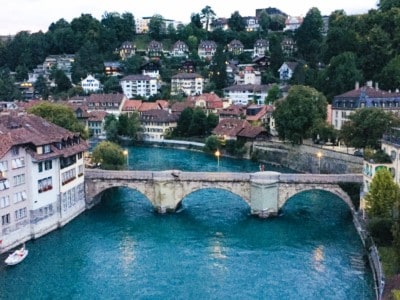

 Kramgasse street
Kramgasse street Bern clock tower in the old town
Bern clock tower in the old town The Bern clock tower at night
The Bern clock tower at night Outside of the Bern Historical Museum, a Bern Museum you can visit on a trip here
Outside of the Bern Historical Museum, a Bern Museum you can visit on a trip here Outside Einstein’s House (picture courtesy of AEG Bern)
Outside Einstein’s House (picture courtesy of AEG Bern) Inside Einstein’s House (picture courtesy of AEG Bern)
Inside Einstein’s House (picture courtesy of AEG Bern)